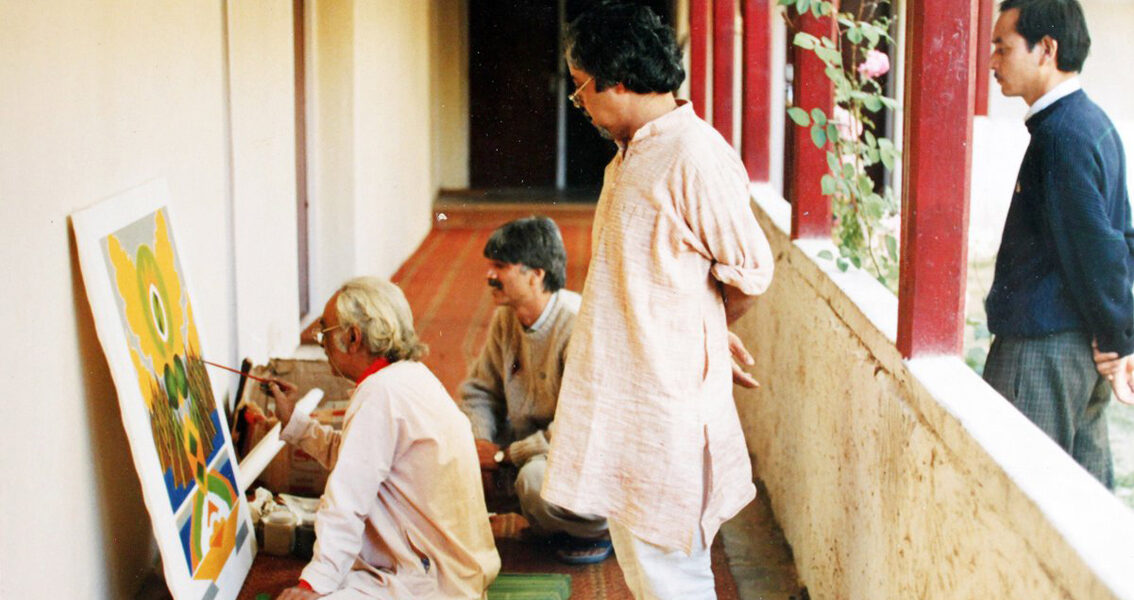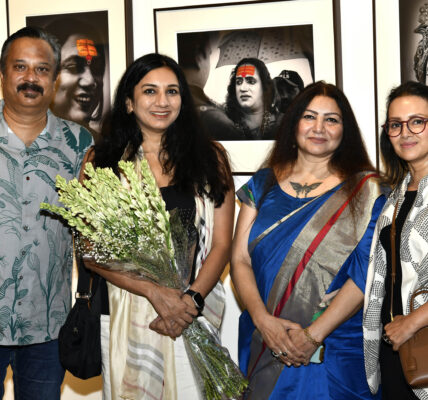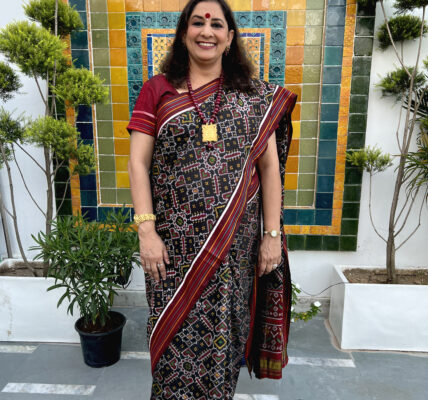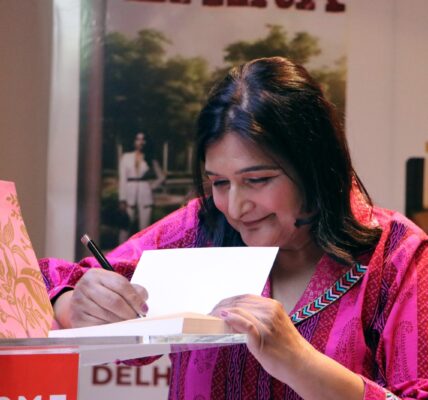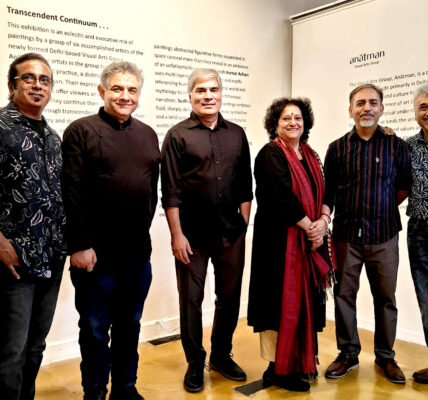JOURNEY TOWARDS MYSTICAL AWARENESS
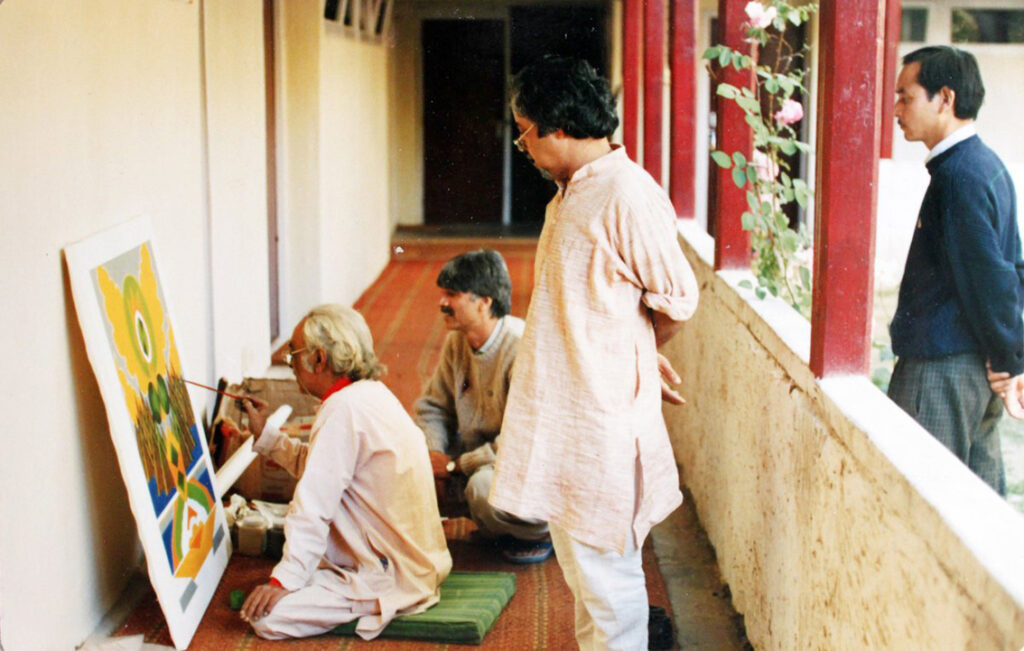
GHULAM RASOOL SANTOSH, (1929 — 1997)
Ghulam Rasool Santosh was born in Srinagar, and studied at the Faculty of Fine Arts,
M.S. University, Baroda, from 1954 to 1956.
He has had solo shows in leading galleries in New York, Los Angeles, Chicago, Mumbai and New Delhi, and has participated in several group shows including ‘Modern Indian Paintings’ at the Hirschhron Museum and Sculpture Garden, Washington DC, in 1982; ‘Contemporary Indian Art’ at the Royal Academy of Art, London, in 1982; Contemporary Indian Art, at the National Gallery of Modern Art, Japan, in 1979-80; ‘Contemporary Indian Painting’, Washington DC, in 1973; the Sao Paulo Biennale in 1969-71; the first Triennale in India in 1968; and the Indian Art Exhibition in Eastern Europe in 1956. The Government of India honoured him with the Padma Shri in 1977. In the year 1997 he passed away.
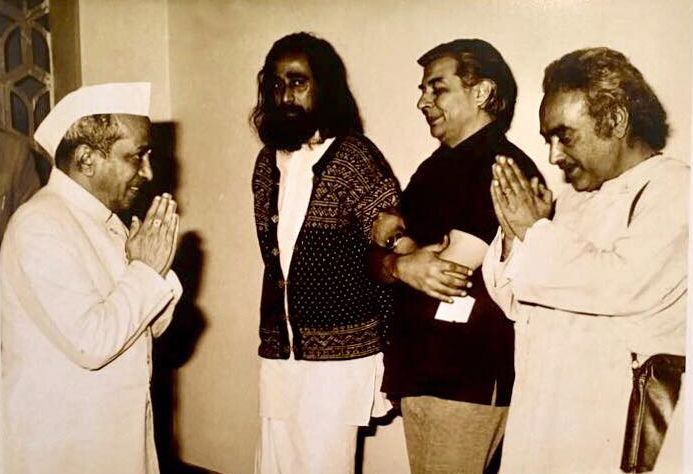
In the early 1920’s my grandfather Muhammad Dar, who was in the police , was posted at Pulwama for two years. It was here my father was born as Ghulam Rasool Dar in 1929. From his early days he had a genuine love for mother Nature and even at that time he knew and understood his destiny. During his stay in Pulwama, he became emotionally attached to his policeman father probably because, it was the only time he received his father’s undiluted love as he was alone with him there. He enjoyed his stay in Pulwama because he felt very near to mother Nature and was fascinated by its beauty.
After getting admission into a government school in Pulwama, he did his primary schooling of 4th and 5th standard from there , that was probably the only school where drawing was taught, and the name of the drawing teacher was Bhasker joo , who hailed from Bediyar in downtown Srinagar. Later on his father was transferred back to Srinagar and there he joined a government school in Khanka to continue his studies further. One of his teachers in class 9th was S. N. Raina who taught him elementary craft and subsequently in class 10th he was taught and groomed into a refined landscape painter by Late D. N. Raina , the great landscape painter of his times. He was addressed as “Lassa”(his pet name) by his friends and “Lala” by his immediate family and relatives.
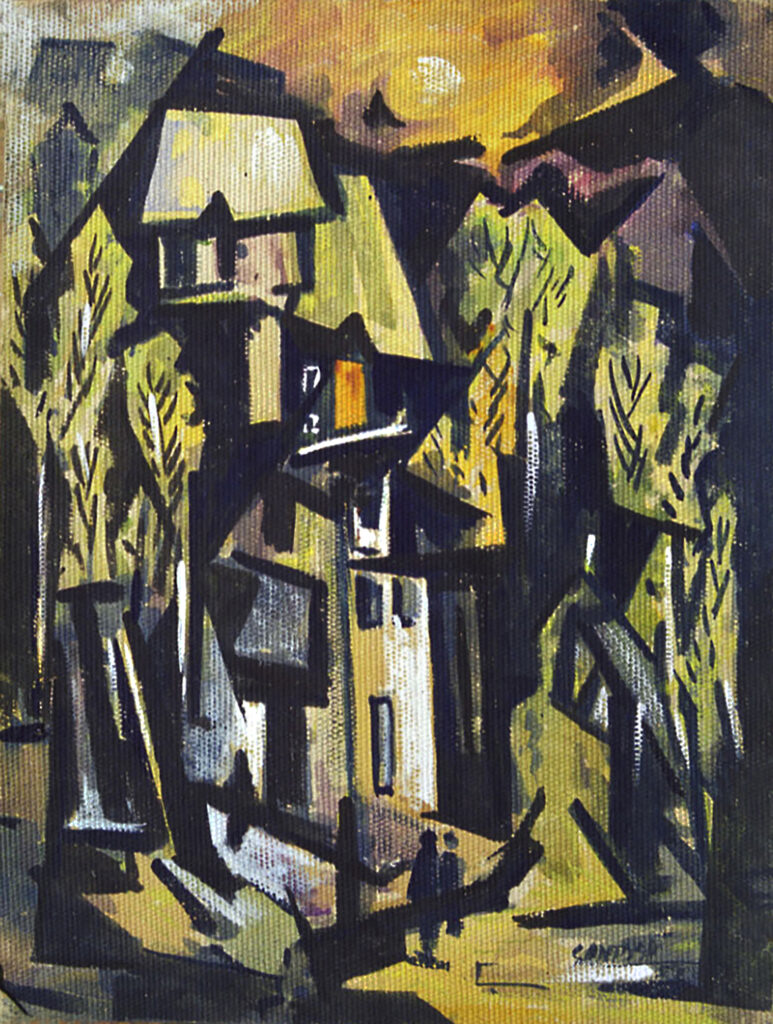
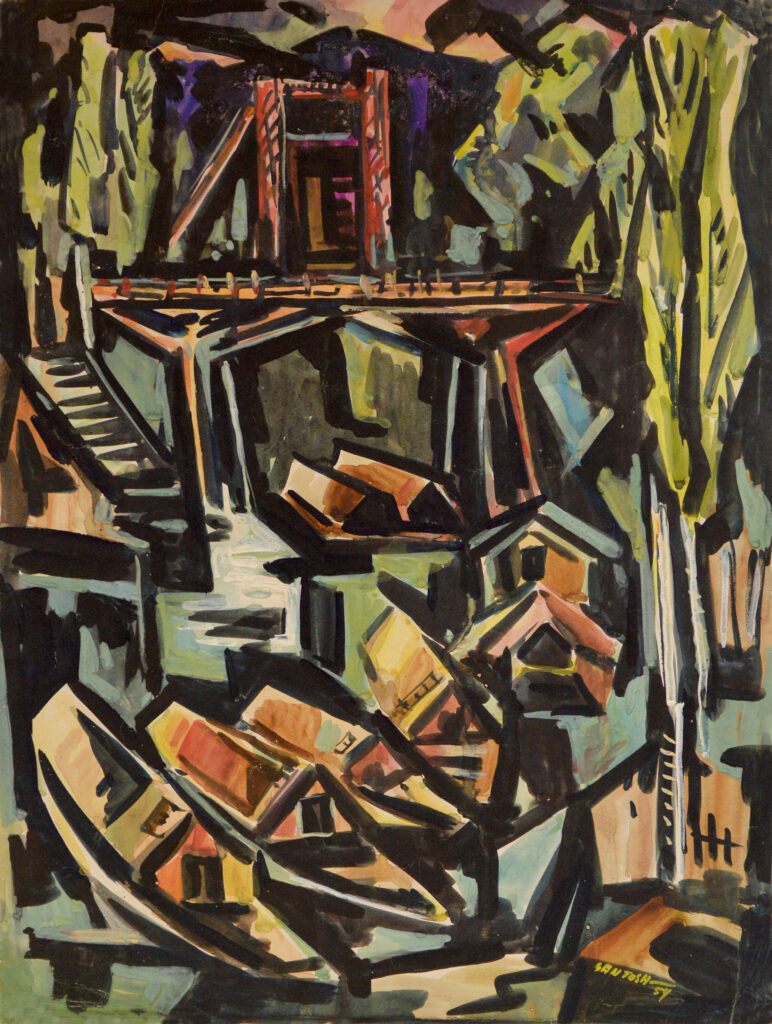

He had to give up his education after passing his matriculation because of the death of his father. His early years were full of struggle and being the eldest son had to look after his two younger brothers very early while he was still a boy. He had to work variously as a sign-board painter, a papier-mache worker and a weaver to support his family. His mother was very compassionate and knew about his love for nature and art. With whatever little money he could save he bought colors and other art material for painting. His love for art and Nature also could be traced back to ancestral heritage as his grand father practiced the art of ornamental painting on papier-mache a native craft of Kashmir. His early solid foundation under various drawing masters during his school days in handling brush and paint allowed him to get noticed by the Progressive Arts Association in Kashmir. He continued with his landscapes with infusion of “Cubist” ideas while painting picturesque sceneries of Kashmir, especially the backwaters of the Dal and the Jhelum. His command on the perspective of the Shikaras and the House-boats and his understanding of the Cubist sensibilities were instrumental in his getting spotted by Syed Haider Raza while he was exploring and painting the landscapes of Kashmir. Raza’s meeting with the Kashmir progressive artists group eventually led to him getting the Government scholarship to study Fine Arts under famous painter N. S. Bendre at the M. S. University Baroda in 1954. He was enrolled as a non -formal student in the Art Faculty for two years. Here he perfected the art of figurative drawing and portraiture in which he excelled and went on to become one of the prominent young painters of India at that time .Between 1958 and 1962 his art began to evolve into a more individualistic manner where he did various experiments with multiple techniques such as the “Impasto” ( the process of working with thick layer of paint). After a time his style of painting figures become more and more abstract and simplified.
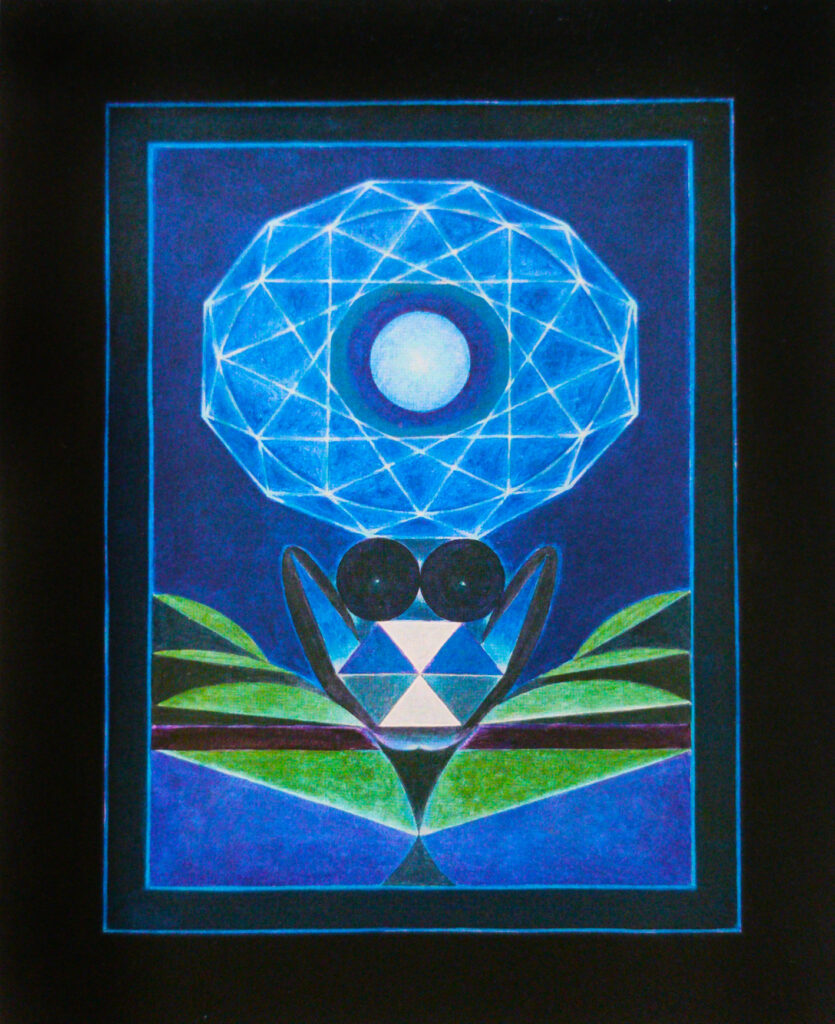
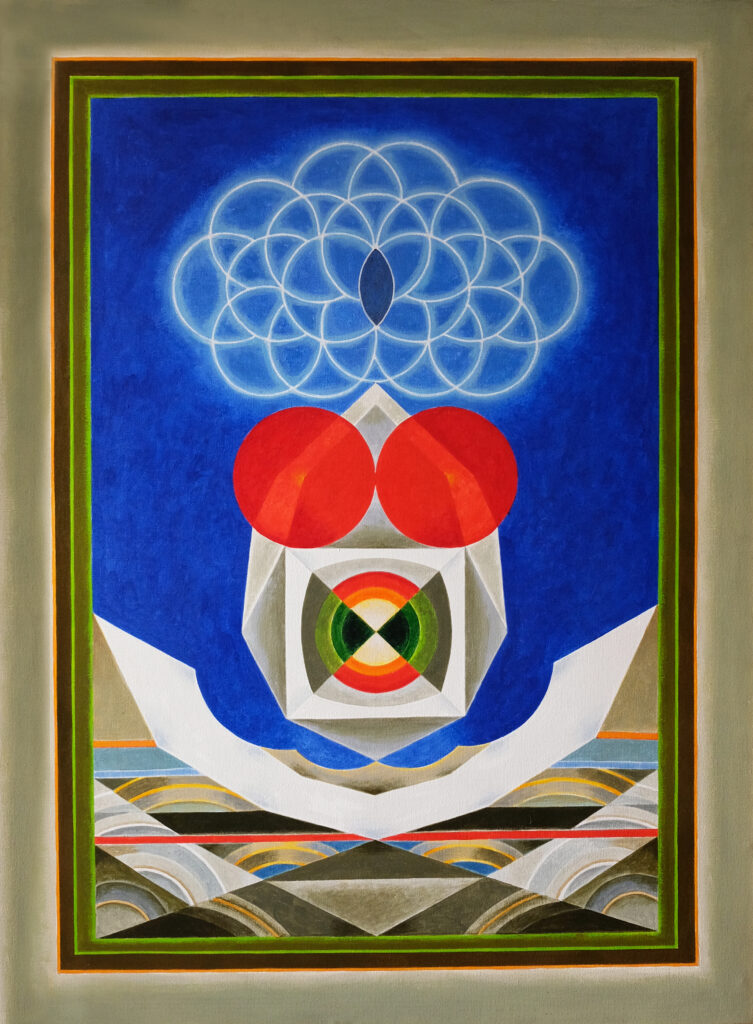
My father fell in love and married “Toshi”(Santosh Chopra) my mother, a Punjabi Hindu girl living in the same neighborhood in downtown Srinagar. In 1958 they were married in Mussoorie in a quietly solemnized court marriage. He added to his name “Santosh” the name of my mother and immortalized his feelings for her through his poems and elevated the meaning of Santosh to “ more than contentment and fulfillment”. In 1962 he took a visit to the Holy cave of Amarnath, and it was here he had received his divine command after experiencing multiple visions and miracles during the arduous journey. He was visibly a changed man on his return from the yatra. He stopped painting for a while because he wanted a change in his paintings, a change which would take him back to his traditions, basically visual traditions of Shiva – Shakti philosophy and concept in Tantra . He believed that there are same universal values behind all these visual traditions. He was influenced mainly by the practices in the Kashmiri Shaiva traditions. Initially he based his works on the Maithuna facets of “Pancha Makaras”. Kashmir Shaivism also influenced him in terms of colour because it emphasizes about “ Prakasha Vimarsha” and considered colour as a form of light. In the beginning Orange colour dominated his paintings because it had a deep connection with Tantra in the form of “Sindoor”. Kashmir Shaivism was both idealistic and realistic in essence, strongly advocating a pragmatic approach to life. Tantra did not approve forcible control of mind as an essential step of religious attainment and believed in simultaneous enjoyment of body and with liberation of mind. Santosh , now that he was known by this name went on a spiritual quest and in the prime of his youth, he went on to study Tantric texts as to get familiarized with its secretive rituals. He started practicing Yoga and Meditation and even had a guru named Balkrishna Rao, who hailed from Tamil Nadu, guided and initiated Santosh ji into practicing meditation .
From the Vedic times, the social structure of the Indian society was based on the basic understanding of the Mantras “Jap” and Yantra “Rituals”. The iconic imagery of the Yantra is the direct interpretation of the mind and the body; an elevated state of mind from the physical self to the spiritual awareness. Spiritual awareness can also be addressed as soul-awareness, where the person is in a process of locating his own-self or his “roots”, trying to envisage who he is? Where he comes from – his origin and his cycle of Karma vis a vis his past life and how he can discipline his future life; In this state of mind past and future co-exist. The present state of mind acts as a transitional medium through which the spiritual journey begins and culminates into a concentric point or the spiritual orb. These questions kept reoccurring in Santosh ji ‘s mind whenever he was in deep thought.
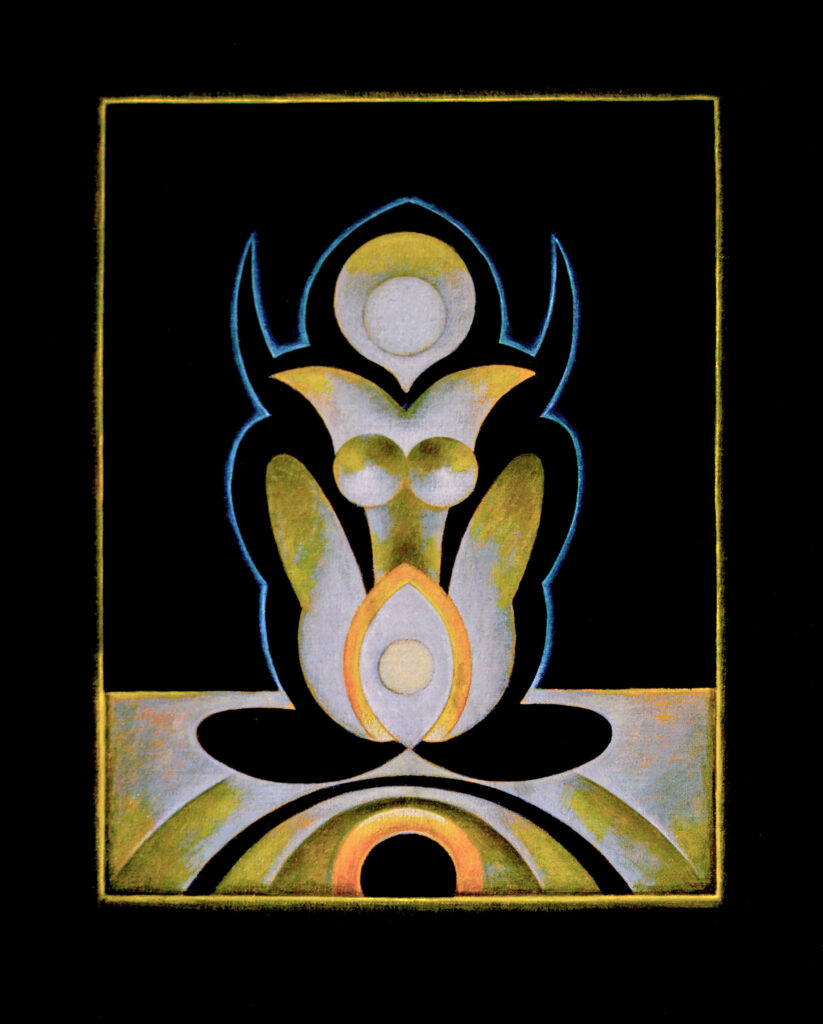
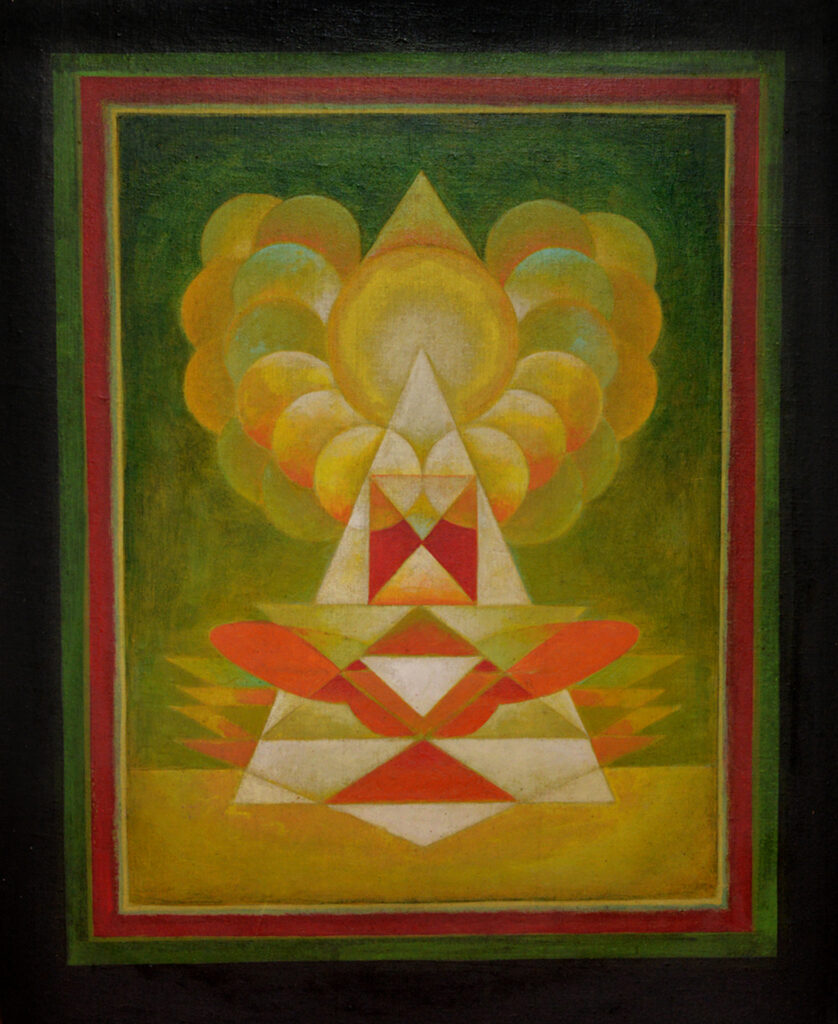
By far the most frequently used Tantra symbol in his canvases was the cosmical image of the universe embodied in the tantric yantra, a sacred geometrical symbol used as a tool for meditation and ritual worship in tantric “ Sadhna”. Santosh ji re -discovered a tantric Shri-Yantra that was rock-carved vertically in the lap of Hari-Parbat , a place which was revered by local Kashmiri pandits and was called “Chakreshwari”or Sharika Devi believed as the incarnation of Devi Ma Durga. Frequent visits to Chakreshwari opened his eyes to paint with new possibilities hardly seen before . The coded meaning of its symbolic representation was for him the ultimate realization of his unity with the cosmos. The three shapes, the point, the triangle and the circle appeared in most of his paintings with several combinations. The most prominent is the Hexagon, formed by the upward pointing male triangle and the downward pointing female triangle. The star-hexagon has its numerical equivalent in the number 6. Similarly the primary sign of sacred “yantra” is the inverted triangle , the root matrix of the divine Shakti and her three energies of Will, Knowledge and Action represented by three points. It is therefore described in the tantric texts as the “Yoni – Mandala” of the Shakti-principle that unfurls the static universe into action. One of the most astounding and mathematically perfect yantras is the Sri-Yantra , he used to believe and as his individual search into Tantra and Kashmir Shaivism deepened, there was a transition to achieve a geometrical abstraction and suggestive expression in his work. In his works, these symbols are combined in infinite ways to form compositions of exquisite beauty reflecting the innate order of creation. Two chakras became very important in his paintings namely the Muladhaara Chakra ( symbolic representation of Kundalini Mani ) and Sahasraara Chakra (symbolizing the crown of the head). He created paintings having symmetry and balance with the intervention of triangles and circles culminating into formal configuration, where one can observe an outline of a figure sitting in “Padmasana “.
With more than fifty years of consistent creative experience as painter of repute he had reached a stage of a “Shilpi” in the true sense of the term, whose creations are expressive of the divine forms. Santosh Ji’s Tantra paintings are in the spirit of an indigenous attitude and they explore the spiritual basis of man’s being. His artistic activity and spiritual exploration in accordance with the Indian tradition uplift his paintings depicting the images of higher consciousness and aspirations. They reveal an urge to connect individual consciousness to the deepest layer of being.
Santosh Ji’s journey of life revolved around the search for truth, the path to salvation and contemplation from darkness to light. Santosh ji is still hidden, waiting to be discovered by the future generations, who will one day be proud of this Kashmiri genius also known as the Leonardo Da Vinci of Kashmir. Many of his Kashmiri pandit friends called him “Sant Santosh” A true son of the soil , he was an epitome of secularism a wonderfully warm person and a loving father to me and my siblings. Unfortunately ,his creative journey ended on 10th of March 1997. His restless soul, always yearned for ultimate truth , suddenly left his mortal frame to merge with it.
He once said, while in conversation with K.L. Kaul, the famous art critic, that each of his paintings is a vibration and that he consciously tries to engage the medium of sight. His poetries, written almost entirely in Kashmiri language, have not been translated in full yet, nor any attempt has been made to co-relate them with his paintings . G.R. Santosh and his art thus remains far from complete and needs scholarly attention, which I feel is long overdue. Almighty bless his soul with eternal peace.
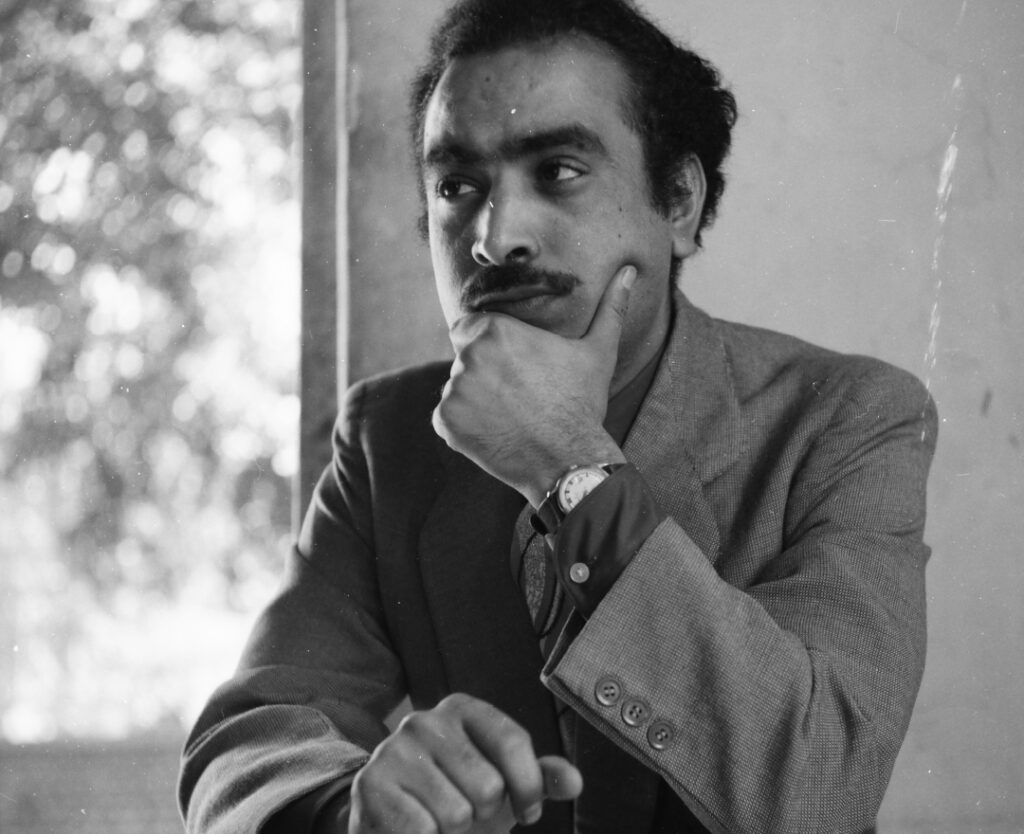
I don’t skecth, I Divide the canvas down the central axis and start. Since I try to create colour as light, the painting is built slowly, gradually. People respond spontaneeously. They see the work. I tell them to take time over it. And they come around, by many routes, to the same basic point — linking these paintings to the contemplative life…
— G. R . Santosh
Quote Box:

